The Induction Site
Search this site, or just roll your cursor over the colored boxes below the pictures.Advertisement:
Advertisement:
Advertisement:
Advertisement:
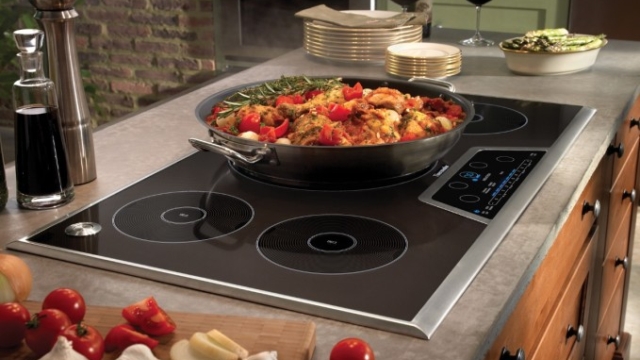
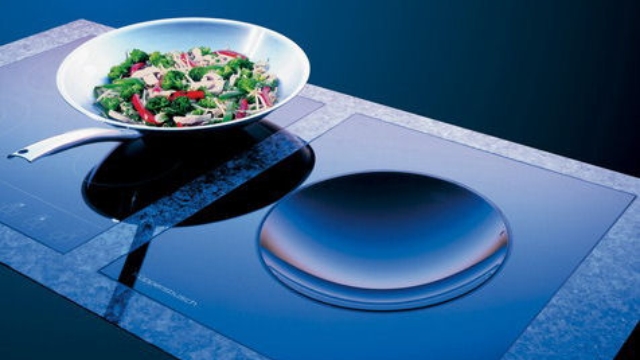
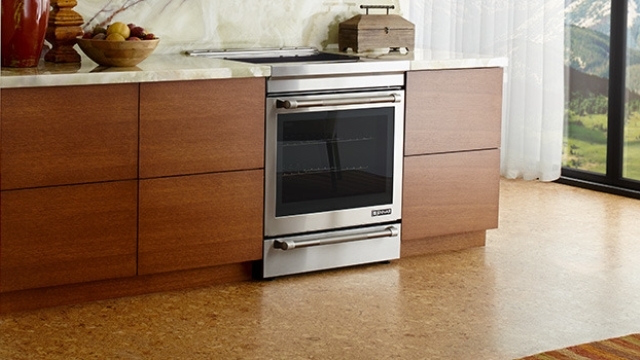
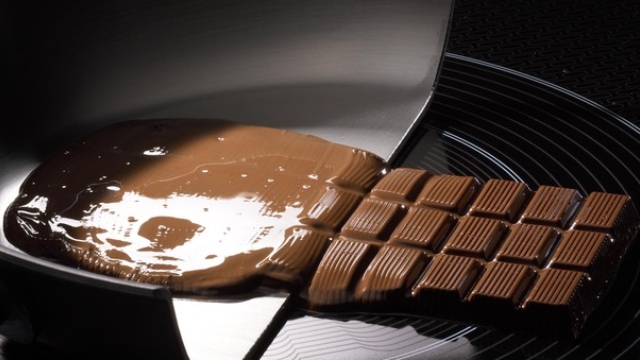
"This extraordinary metal, the soul of every manufacture, and the mainspring perhaps of civilized society.."
—Samuel Smiles
Quick page jumps:
Properly treated cast-iron cookware is the original and still clearly best "non-stick" cookware, and with zero carcinogen risks. "Properly treated" means chiefly "properly seasoned". "Seasoning" cast iron is not an occult art: it is simple and easy (not always the same things!).
The cast-iron cookware we carry, Lodge, comes factory pre-seasoned; they no longer sell any unseasoned "raw" cast iron at all. So, while many people feel that even factory-applied seasoning is best with another layer of "home-applied" seasoning, today's buyer is already off to a running start.
Here, we will present Lodge's exact advice on how to treat pre-seasoned cast-iron cookware, then follow up with some links to sites that go into great detail. But, again, this is really a very simple process.
Here are the things to do on first receiving your new pre-seasoned cast-iron cookware: |
|---|
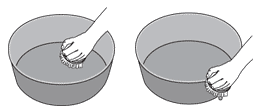 Clean it: Use only hot water (do NOT use soap or detergent!) and a stiff brush (do NOT use a "scrubber"--such as "Brillo"--metal OR plastic!).
Clean it: Use only hot water (do NOT use soap or detergent!) and a stiff brush (do NOT use a "scrubber"--such as "Brillo"--metal OR plastic!).
|
 Dry it: Make sure you have got it good and dry. You can even heat it mildly on your cooktop to make sure all the moisture has been driven off.
Dry it: Make sure you have got it good and dry. You can even heat it mildly on your cooktop to make sure all the moisture has been driven off.
|
|
Store it: Store it in a cool, dry place. Do not store cast-iron cookware with a lid on. You want free air circulation over at least the interior surfaces. If you can place the cookware on some sort of little support, to promote air exposure to the base as well, so much the better. |
Seasoning of cast iron is a perpetual process. That does not imply a lot of work, but it does imply a decent regard to the material. There are really just three simple rules.
Rule #1: NEVER expose hot cast iron to cold water!
After use, it is best not to even put "hot" water on it till it has cooled down to room temperature, because "hot" water and hot cast iron may not be at anything like the same temperature. Cast iron is as strong as, well, cast iron--but it is vulnerable to severe thermal-shock stress. A piece of hot cast iron immersed in cold water, or even having cold water run onto it, will certainly buckle, and very likely just crack in two. Since you never want to soak cast iron anyway, this should be an easy rule. Think of it this way: if you wouldn't want to hold the item in your bare hand, you shouldn't be putting water on it. (Needless to say, you never, never, ever even think about putting cast iron in a dishwasher.)
Rule #2: Always, just before using any piece of cast-iron cookware, oil--with a spray-on or by hand--the cooking surface.
Rule #3: Always clean and fully oil any piece of cast-iron cookware immediately after use. When the cookware has cooled enough after use that you can handle it safely and comfortably, rinse it well under running hot water, and scrub it out with the same sort of stiff-bristled brush recommended for seasoning. (You might as well dedicate a suitable one to the specific purpose of cleaning your cast iron.) Normally, you wil find that cast iron cleans up perfectly in this way, but should you ever encounter (perhaps in its early days, when a piece is not fully aged) some bake-on that is being stubborn, use a little plain salt as a mild abrasive--but that should rarely if ever be necessary.
After that post-use cleaning, be sure you dry it very thoroughly; many people like to put it back on the cooktop for a few minutes, to be sure all moisture has been driven off. Then, when it is dry, spray on or wipe on a thin film of oil or melted solid shortening--just as in the initial seasoning procedure described above--then store the piece (as always, in a cool, dry place with good air circulation for its surfaces). Never store any foodstuffs in a cast-iron vessel--it can break down the seasoning.
If it's convenient, try at first--whether your piece was home-seasoned or factory-seasoned--to cook relatively fatty foods in the vessel; that will, of course, act to augment the seasoning process. Do not expect that a newly seasoned piece (again, whether home- or factory-seasoned) will at once be ready for the most demanding non-stick uses, such as, for example, pancakes; also try to avoid, in the very early days, strongly acidic (tomato-based, for example) or alkaline (beans, for example) foods, or really wet stuff (like soup). Things like those tend to work against whatever seaoning exists; once the item is well-seasoned, that won't matter, but when it's still acquiring its character, it's as well not to work against it. In a short enough while, you'll have something you can cook anything in better than in any something-lon coated pan, plus no nightmares about carcinogens.
If you have been lax in your upkeep of a piece of cast iron, and find that you can see rust (or experience a metallic taste in the cooked food), it's no catastrophe. Just scour off the rust, then treat the piece like a new, unseasoned item according to the instructions in the first table on this page. No sweat.
If you have been very lax--or have inherited or otherwise acquired an ill-treated piece--and there is a substantial build-up of grease and scum that will not readily scrub off, even with a little salt, you can still easily rescue the piece. Put it, upside down, in a self-cleaning oven (being sure to put some foil under it) and run the oven on "clean" for at least one cycle. The crud will convert to ash (hence the foil). When you're done, treat it like a new piece of unseasoned cast iron. By all reports, that works just fine. (Note, though, that some sources suggest that this might be too much heat, and could warp a piece; but it's reported by people who have used it satisfactorily.)
If you are following the simple rules here, you probably won't need to do anything further. But some folk like to re-season their cast-iron periodically, especially when it is still relatively new. It can do no harm and may well help. Follow the instructions in the first table on this page, except don't soap-wash the item first (else you'll lose the existing seasoning and be literally starting anew rather than augmenting).
Here you can get further insights into and information on this wonderful sort of cookware.
Seasoning Cast Iron (Wikipedia)
Seasoning Cast-Iron Pots (Cooking Louisiana)
Cast-Iron Jack McGrew's Ultimate Method For Seasoning Cast-Iron Cookware (Melinda Lee)
Cast-iron pans (eGullet forum)
Caring for Your Cast Iron (Dummies.com)
You can see the complete line of Lodge cast-iron cookware that we carry by clicking the link in this sentence.
Advertisement:
Advertisement:
All content copyright © 2002 - 2025 by The Owlcroft Company.
This web page is strictly compliant with the W3C (World Wide Web Consortium) Extensible HyperText Markup Language (XHTML) Protocol v1.0 (Transitional) and the W3C Cascading Style Sheets (CSS) Protocol v3 — because we care about interoperability. Click on the logos below to test us!
This page was last modified on Monday, 22 January 2024, at 12:46 am Pacific Time.